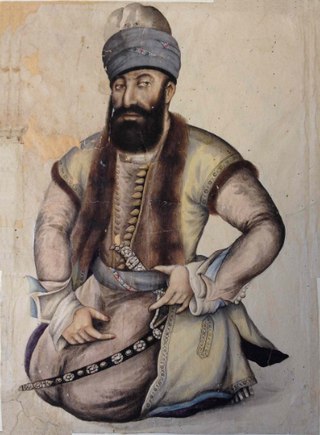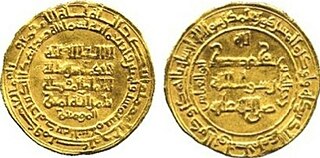
Shiraz is the fifth-most-populous city of Iran and the capital of Fars Province, which has been historically known as Pars and Persis. As of the 2016 national census, the population of the city was 1,565,572 people, and its built-up area with Sadra was home to almost 1,800,000 inhabitants. A census in 2021 showed an increase in the city's population to 1,995,500 people. Shiraz is located in southwestern Iran on the rudkhaneye khoshk seasonal river. Founded in the early Islamic period, the city has a moderate climate and has been a regional trade center for over a thousand years.

The national flag of the Islamic Republic of Iran, also known as the tricolor, is a tricolor featuring the Pan-Iranian colors comprising equal horizontal bands of green, white and red with the national emblem ("Allah") in red centred on the white band and the takbir written 11 times each in the Kufic script in white, at the bottom of the green and the top of the red band. After the Iranian Revolution of 1979, the present-day flag was adopted on 29 July 1980.

The Buyid dynasty, also spelled Buwayhid, was a Zaydi and, later, Twelver Shia dynasty of Daylamite origin, which mainly ruled over central and southern Iran and Iraq from 934 to 1062. Coupled with the rise of other Iranian dynasties in the region, the approximate century of Buyid rule represents the period in Iranian history sometimes called the "Iranian Intermezzo".

Abu Talib Muhammad Tughril ibn Mika'il, better known as Tughril, was a Turkoman chieftain, who founded the Seljuk Empire, ruling from 1037 to 1063.

Agha Mohammad Khan Qajar, also known by his regnal name of Agha Mohammad Shah, was the founder of the Qajar dynasty of Iran, ruling from 1789 to 1797 as Shah. Originally a chieftain of the Quwanlu branch of the Qajar tribe, Agha Mohammad Khan was enthroned as the king of Iran in 1789, but was not officially crowned until March 1796, having deposed Lotf Ali Khan of the Zand dynasty in 1794. Agha Mohammad Khan Qajar was famously the eunuch Monarch, being castrated as a toddler upon his capture by Adel Shah Afshar, and hence was childless. He was assassinated on 17 June 1797, and was succeeded by his nephew, Fath-Ali Shah Qajar.

Fath-Ali Shah Qajar was the second Shah (king) of Qajar Iran. He reigned from 17 June 1797 until his death on 24 October 1834. His reign saw the irrevocable ceding of Iran's northern territories in the Caucasus, comprising what is nowadays Georgia, Dagestan, Azerbaijan, and Armenia, to the Russian Empire following the Russo-Persian Wars of 1804–1813 and 1826–1828 and the resulting treaties of Gulistan and Turkmenchay. Historian Joseph M. Upton says that he "is famous among Iranians for three things: his exceptionally long beard, his wasp-like waist, and his progeny."

Mohammad Karim Khan Zand was the founder of the Zand Dynasty, ruling from 1751 to 1779. He ruled all of Iran (Persia) except for Khorasan. He also ruled over some of the Caucasian lands and occupied Basra for some years.

The Zand dynasty was an Iranian dynasty, founded by Karim Khan Zand that initially ruled southern and central Iran in the 18th century. It later quickly came to expand to include much of the rest of contemporary Iran as well as parts of Iraq. The lands of present-day Armenia, Azerbaijan, and Georgia were controlled by khanates which were de jure part of the Zand realm, but the region was de facto autonomous. The island of Bahrain was also held for the Zands by the autonomous Al-Mazkur sheikhdom of Bushire.

Abū Ja'far Abdallah ibn Aḥmad al-Qādir, better known by his regnal name al-Qā'im bi-amri 'llāh or simply as al-Qā'im; 8 November 1001 – 3 April 1075), was the Abbasid caliph in Baghdad from 1031 to 1075. He was the son of the previous caliph, al-Qadir. Al-Qa'im's reign coincided with the end of the Buyid dynasty's dominance of the caliphate and the rise of the Seljuk dynasty.

Abū'l-Qasim ʿAbd Allāh ibn Muhammad ibn al-Qa'im better known by his regnal name al-Muqtadi was the Abbasid caliph in Baghdad from 1075 to 1094. He succeeded his grandfather caliph al-Qa'im in 1075 as the twenty-seventh Abbasid caliph.

Damghan is a city in the Central District of Damghan County, Semnan province, Iran, serving as capital of both the county and the district.

Saadi Shīrāzī, better known by his pen name Saadi, also known as Sadi of Shiraz, was a Persian poet and prose writer of the medieval period. He is recognized for the quality of his writings and for the depth of his social and moral thoughts.
Iran (Persia) has had numerous capital cities and royal centers throughout its history.

Abarkuh is a city in the Central District of Abarkuh County, Yazd province, Iran, serving as capital of both the county and the district.

Abu Suleiman Dawud Chaghri Beg ibn Mikail, widely known simply as Chaghri Beg (989–1060), Da'ud b. Mika'il b. Saljuq, also spelled Chaghri, was the co-ruler of the early Seljuk Empire. The name Chaghri is Turkic and literally means "small falcon", "merlin".

The Salghurids, also known as the Atabegs of Fars, were a Persianate dynasty of Salur Turkoman origin that ruled Fars, first as vassals of the Seljuks then for the Khwarazm Shahs in the 13th century.

Hajji Ebrahim Shirazi, also known by his honorific title E'temad ol-Dowleh, was an Iranian statesman who served as the kalantar of the city of Shiraz during the late Zand era and later as the first grand vizier of Qajar Iran.

Lotf Ali Khan was the last Shah of the Zand dynasty. He ruled from 1789 to 1794.

















